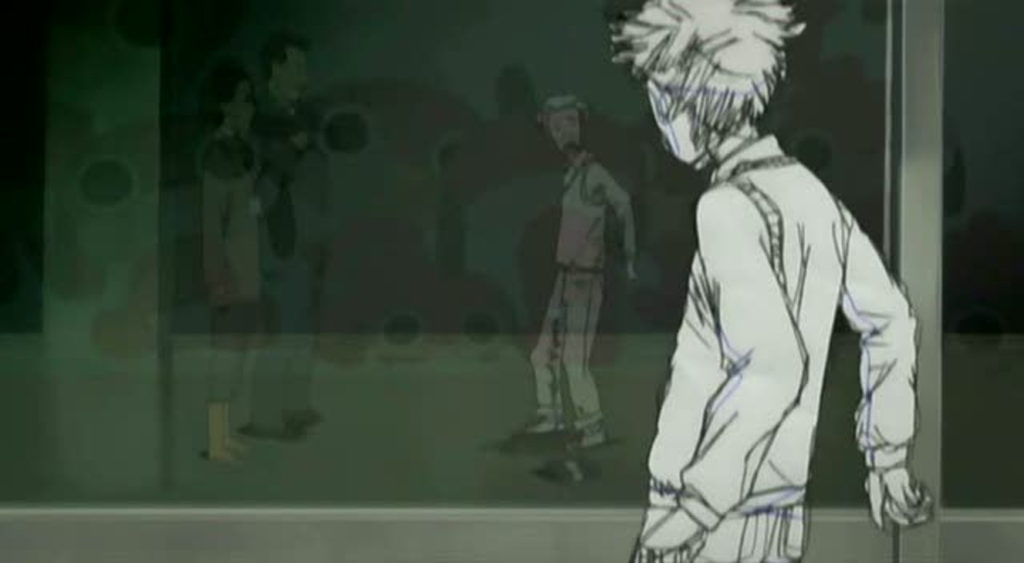The tenth episode of Paranoia Agent does all that it possibly can to knock the viewer off-balance from the first frame. Without a single word of warning (unless the “dream confessions” preview from the end of “ETC” counts), it picks us up and throws us right into the middle of something that, whatever it is, isn’t Paranoia Agent. Unless Paranoia Agent has suddenly taken to looking like this:
First things first: since this is the production of the Maromi TV show we’re dealing with, it comes as no surprise that there is a whole lot of Maromi on display throughout the episode. For those of us who’ve already been driven to find the floppy pink bastard somewhat unnerving, it’s like being pitched headlong into a 24 minute waking nightmare. For while Maromi is never as terrifying as when he’s idly chatting with Tsukiko, urgently demanding that she repress whatever memories are just below the surface (Tsukiko does not appear in this episode, though she is mentioned as the character’s creator), “Mellow Maromi” more than makes up for this in the sheer quantity of scenes of Maromi being hell-ass creepy.
The only “true” Lil’ Slugger attack, then, is the one stretched out across the scenes of Saruta driving. First appearing in the far distance out the back window (so distant that I can easily imagine someone missing him), the boy with the bat draws ever nearer to Saruta’s car as Saruta’s deadline closes in, reminding us that the nature of a Lil’ Slugger attack is to strike only when the victim is in a moment of great crisis, and striking only in such a way that it gives the victim what he or she wants and needs to escape that crisis. And Saruta does in fact get out of his crisis by the narrowest of margins, though I can’t imagine it’s in the exact way he anticipated.
But Kon will have none of that, and so he introduces us to the Mellow Maromi staff using that backwards chronology so that the series director – the first man to go missing – is the last person we meet, and so that we’ve had a good chance to observe how effectively the process can still go on in the absence of any director at all. As each new member of the production team is introduced, the action screams to a halt, as Maromi himself explains what that person’s duties include (that Maromi interrupts in the middle of dialogue sometimes, I take to be a further demonstration of how much of a terrible little asshole he is). Each and every one, from the director down to the production coordinator, with stops at the producer, the sound designer, and the chief colorist, among others, is identified as being such an important element of the whole production that without them, the whole edifice would collapse.
As to why Kon then sees fit to pay tribute to his staff by telling the story of how they got killed off one-by-one; well, that is probably a matter for his sly dark sense of humor. Indeed, “Mellow Maromi” is among the most sarcastic episodes of Paranoia Agent of them all, though calling it “funny” would be pushing things. Still, there’s something that diffuses the darkness of an episode like “MHz” or “Fear of a Direct Hit”, though strictly in terms of plot developments, “Mellow Maromi” is one of the grimmest episodes in the series run. Part of it, I think, is the constant presence of Maromi and his merchandise: turning both the show and Saruta (the only member of the production team who apparently likes Maromi) into the punchlines of some unspoken sick joke. Then again, there’s also the presence of Lil’ Slugger, grinning like a maniac demon, to remind us of how nastily serious Paranoia Agent can be. In the end, “Mellow Maromi” is as inexplicable and twisted as the series has been yet, and it sends us into the final run of episodes in the perfect emotional register.
